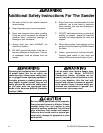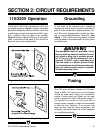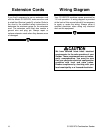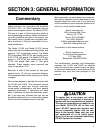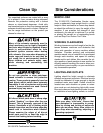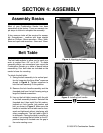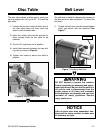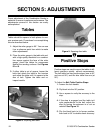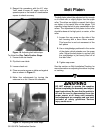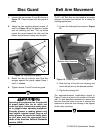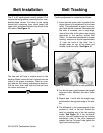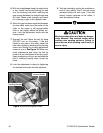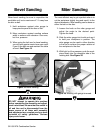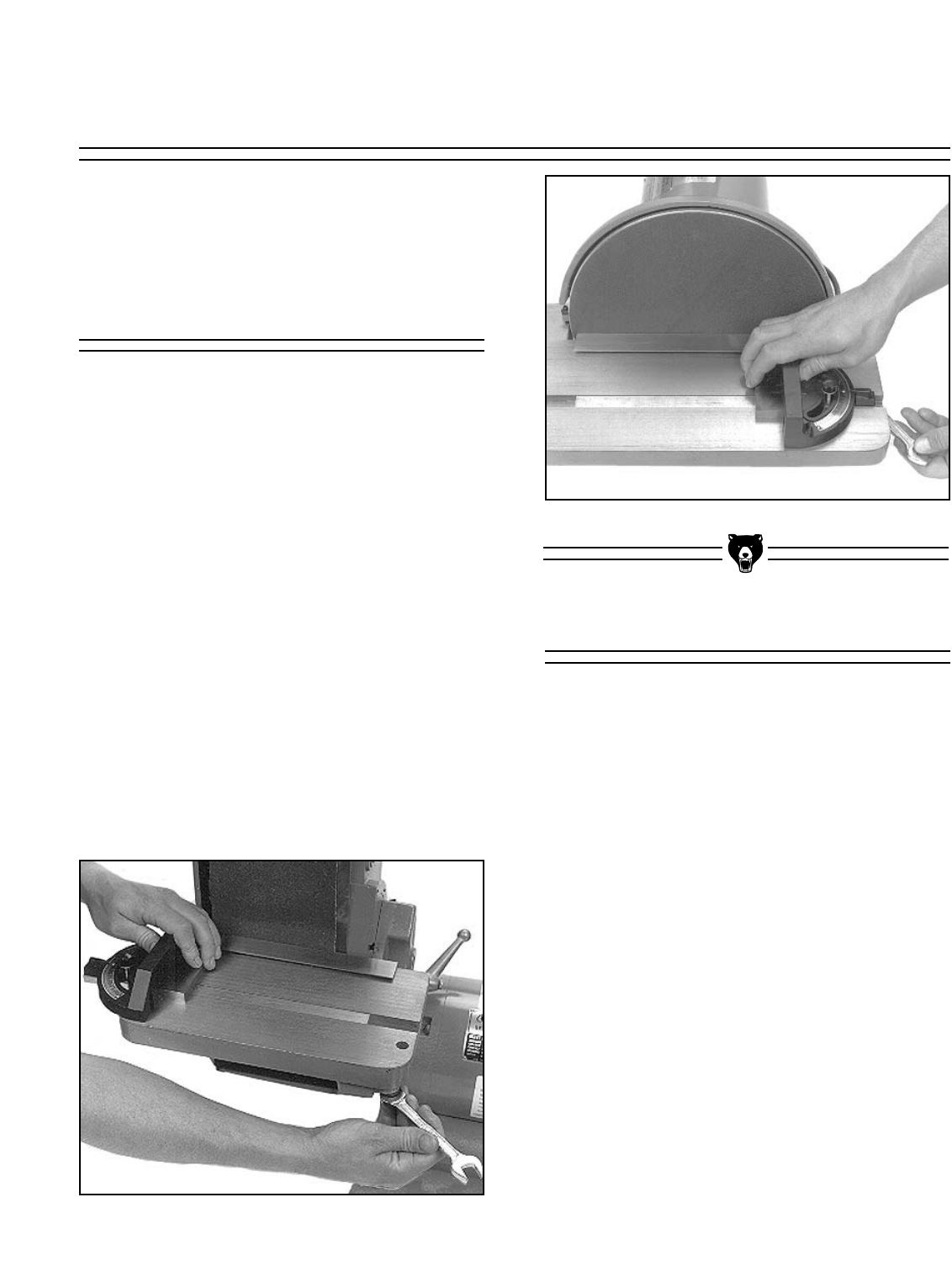
-12- G1183/1276 Combination Sander
SECTION 5: ADJUSTMENTS
Proper adjustment of the Combination Sander is
essential to ensure its optimum performance. The
adjustments covered in this section are easily
accomplished.
Tables
Tables should be square in both planes to exe-
cute precise work. Procedures for accomplishing
this are described below.
1. Adjust the miter gauge to 90°. You can use
it as a reference point from which to make
other adjustments.
2. Place the miter gauge in the table slot and,
with a high-quality machinist’s or combina-
tion square against the face of the miter
gauge, check the tables for squareness
against the sanding surfaces. See Figures
8 and 9.
3. If either table is out of square, loosen the
bolts that attach the table to the trunnion
and adjust the table until it is square to the
disc or belt. Tighten the table and re-
inspect results.
Figure 8. Squaring belt table.
Figure 9. Squaring disc table.
Positive Stops
Positive stops are used to move the tables to dif-
ferent positions quickly, without measurement.
The belt table has two positive stops (one at 45°
and one at 90°) and the disc table has one (at
90°).
To Adjust the Belt Table Positive Stops:
1. Loosen the lock handle.
2. Flip block into the 90° position.
3. Use a square to verify the accuracy to the
stop.
4. If the stop is engaged and the table isn’t
quite perpendicular to the belt, adjust the
stop by turning the setscrew in or out as
needed. See Figure 10.
5. Flip the block back to its former position,
then back to 90° to double-check accuracy.



